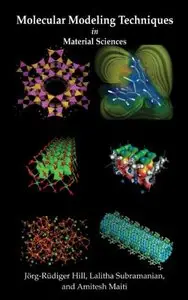Molecular Modeling Techniques In Material Sciences by Jörg-Rüdiger Hill, Lalitha Subramanian and Amitesh Maiti
English | 2005 | ISBN: 0824724194 | 328 pages | PDF | 4 MB
English | 2005 | ISBN: 0824724194 | 328 pages | PDF | 4 MB
Increasingly useful in materials research and development, molecular modeling is a method that combines computational chemistry techniques with graphics visualization for simulating and predicting the structure, chemical processes, and properties of materials.
Molecular Modeling Techniques in Materials Science explores the impact of using molecular modeling for various simulations in industrial settings. It provides an overview of commonly used methods in atomistic simulation of a broad range of materials, including oxides, superconductors, semiconductors, zeolites, glass, and nanomaterials. The book presents information on how to handle different materials and how to choose an appropriate modeling method or combination of techniques to better predict material behavior and pinpoint effective solutions. Discussing the advantages and disadvantages of various approaches, the authors develop a framework for identifying objectives, defining design parameters, measuring accuracy/accounting for error, validating and assessing various data collected, supporting software needs, and other requirements for planning a modeling project. The book integrates the remarkable developments in computation, such as advanced graphics and faster, cheaper workstations and PCs with new advances in theoretical techniques and numerical algorithms.
Molecular Modeling Techniques in Materials Science presents the background and tools for chemists and physicists to perform in-silico experiments to understand relationships between the properties of materials and the underlying atomic structure. These insights result in more accurate data for designing application-specific materials that withstand real process conditions, including hot temperatures and high pressures.



